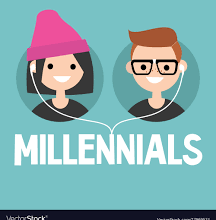Electronic Health Record Software for Students

Every industry, including healthcare, is being transformed by digital advancements. Thanks to a plethora of new technological applications, the healthcare business is becoming more productive by designing simple workflows.
One of the most important and time-consuming duties in the healthcare sector is maintaining records and documentation. Electronic Health Records (EHRs) have been a huge aid since the emergence of technology in this field.
But what exactly are electronic health records (EHRs)? What exactly do they do to assist? We’ll address all of your questions in this comprehensive guide by answering the following questions:
What are Electronic Health Records (EHRs) and how do you use them?
A digitized version of a patient’s medical history is called an Electronic Health Record (EHR). It is maintained by the provider throughout time.
All of the key clinical data pertinent to the patient’s care may be included in an electronic health record, including:
demographics
treatment progress notes
problems
medications
vital signs
past medical history
immunizations
laboratory data
radiology reports, etc.
Electronic health records allow for easy access to information and can help to speed up the process. Other care-related activities can be supported directly or indirectly through various interfaces, including:
evidence-based decision support
quality management
outcomes reporting, etc.
Electronic health records can help doctors make better decisions and deliver better treatment to their patients, which is a step toward enhancing the relationship between patients and doctors.
Difference between Electronic Health Records (EHRs) and Electronic Medical Records (EMRs)?
While researching EHRs, you’ve probably come across the term “electronic medical records” (EMRs). The phrases electronic health records (EHRs) and electronic medical records (EMRs) are sometimes used interchangeably. They do, however, have slightly distinct connotations. Let’s first define the difference between EHRs and EMRs before going into EHR training.
versions of the patient’s medical records There is, nevertheless, a distinction between them.
EMRs are the digital form of a patient’s records that are saved and managed by a single physician. It contains all of the patient’s information and facts from a single practice, which is rarely shared with others. As a result, if a patient switches doctors, the EMR is unlikely to be shared.
EHRs (Electronic Health Records) are a collection of a patient’s records from a variety of sources. It comprises more information from multiple sources and so provides a more thorough and long-term assessment of the patient’s health. Because there is so much information available, professionals are able to deliver better and more focused care to their patients. EHRs can also be safely shared across multiple doctors.
What are the Features of electronic health records (EHRs)?
Each electronic health record software for students program has its own set of features. Even if you have customized electronic health record software designed for your company, you don’t have to have all of the capabilities that are offered in other EHR software.
Here are ten features of electronic health records software that we’ve highlighted and explained:
Portals for Patients
Management of Patient Records
E-Prescribing
Medical History
Reminders
Lab Analytics and Charting
Communication
Templates that can be customized
Management of Payments
Management of Tasks
What are the benefits of EHRs (Electronic Health Records)?
Because both healthcare providers and patients use electronic health records, they are eligible for a variety of advantages.
EHR Benefits for Healthcare Providers
EHRs provide the following advantages to healthcare providers:
Reliability
Updates on a regular basis
Group Management with Fewer Mistakes
1. Reliable
Electronic health records, especially those maintained on the cloud, can be accessed from anywhere in the globe. They can also be backed up. As a result, doctors don’t have to worry about their records being lost or their servers collapsing. The records can be recovered rapidly.
2. Constant Updates
All updates are made in accordance with the various healthcare rules and compliances for electronic information sharing via EHRs. All updates made by doctors or nurses are automatically saved and backed up. Healthcare providers don’t have to worry about software updates if their EHR software is housed on the cloud.
3. Reduced Mistakes
All electronic data is simple to read and handle. Electronic records are more accurate when compared to handwritten records. There will be no misconceptions when the doctors need to refer to a patient’s records because all data has been appropriately saved. Furthermore, because EHRs allow for regular follow-ups, the risk of inaccuracies in the patient’s data is reduced.
4. Group Management
Healthcare practitioners can organize patient information into categories based on diagnoses, treatment techniques, demographics, and other factors. This allows doctors to handle the records of patients with comparable needs as a group, saving time and effort. Customized templates can also be utilized for such groups, making it easier for doctors to keep track of updates.
How to find a stylish EHR software development company for you?
Chancing and hiring an electronic health records software development company that fits best with you requires a lot of exploration. Then, we’ve listed five-way you can follow to find a suitable EHR software development company for you
1. Talk To People
After you’ve talked to people in your network and read reviews online, you must have entered a considerable number of suggestions for companies to hire. Now visit the websites of these companies and look at their former work. Checking out a company’s former work can help you identify veritably snappily if they would be suitable to work for you, if their work quality is fine, etc. Also, check out their social media handles and blogs to ascertain how active they’re , their work process, etc.
2. View Work Profile
While looking for good EHR software development companies, the first step is to talk to people who have hired similar companies in the past.However, there must be numerous people in your network who would have engaged companies to help them with EHRs development, If you work in the healthcare sector. Harkening to people, talking about their reviews of specific companies and reading reviews online can help you filter out the unskillful companies at the morning of your exploration process.
3. Shortlist
After looking at the work biographies, shortlist the companies you wish to communicate with. In this step, make a list of the companies you find desirable, figure out the specific EHRs-affiliated service you want to get from them, and write down their contact information.
4. Communicate
After shortlisting, now communicate with these companies and schedule a meeting with them. When you meet the platoon, you can judge how dedicatedly they would be working for you. Also, in the discussion, talk about the price structures
the time which they’re going to fancy get your work done
the resumes or experience of the platoon that ’ll be working on your design.
5. Hire
After communicating with these companies, estimate their going, platoon experience, etc. Choose the bone that fits best with you and hire them.
Conclusion
Electronic health records software is in high demand these days because it has vastly enhanced record management methods. To obtain the best outcomes and productivity, an increasing number of hospitals and healthcare organizations are using this software and integrating it into their systems. It’s a big step toward modernizing the healthcare industry and bettering how patient data is handled.
Apart from this if you are interested to know about Increasing Focus on Personal Hygiene to Promote Hair Removal Products then visit our Travel category.





